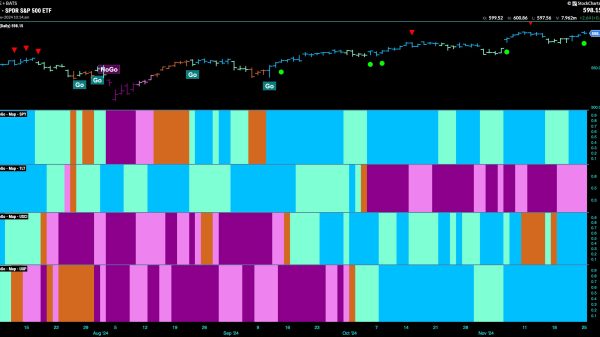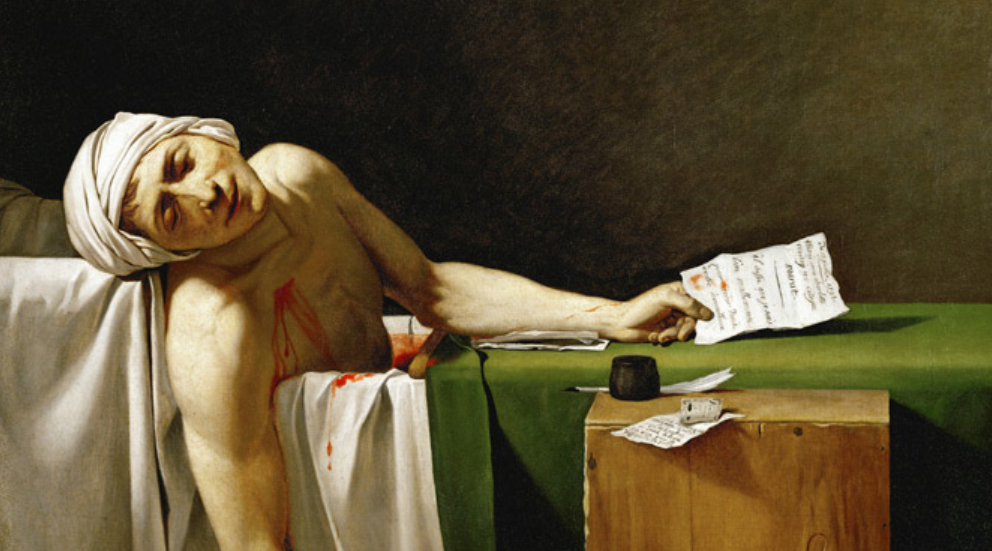For a number of reasons, the French Revolution is a kind of Rorschach Test for educated people. One cause of this phenomenon, if I may pile on metaphors, is clearly the blind man/elephant problem. There are so many parts of the Revolution, so many stages, so many protagonists, so many ideas, so many policies—often quite contradictory—that we are sometimes confused not only as to how to interpret it, but as to what part to interpret as well. Ultimately historians tend to explain the Revolution according to their predilections, or even their heroes. Hence, scholars have explored the complicated situation of French farmers (we call them peasants) and assert that these problems were the foundation of the Revolution. Marx and Marxists interpret the upheaval from the viewpoint of the most radical revolutionaries. Some historians have explored in detail the policies of the Bourbons, and found the origins of the Revolution there. Intellectually inclined scholars have supported the key role of Enlightenment thinkers (above all Jean-Jacques Rousseau) and found intellectual trends to be the compelling cause of the Revolution. And on and on. You could even make a decent argument blaming the weather!
Neither liberty-minded contemporaries nor the classical liberals of the nineteenth century have been much different in this regard. On the one hand, such figures as Thomas Jefferson and the Marquis de Lafayette famously sided with the Revolution in the early stages, when legal privilege was to a great extent abolished and some kind of natural rights confirmed—the Declaration of the Rights of Man and of the Citizen, after all, essentially quoted George Mason’s Virginia Declaration of Rights (but deviated from Mason as well).
The Marquis de Lafayette, helped stage manage the opening phases of the Revolution, but before the Revolution was a year old, he had already found himself at odds with both the radical Jacobins and more moderate revolutionary builders of the state which would eventually be come a model for inflationary war regimes. As the radicals proceeded to cement their power, Lafayette would escape the whole thing in 1792 just ahead of arrest and guillotine.
Equally involved in the political process once the Revolution started, the Marquis de Mirabeau was, like fellow physiocrat and proto-liberal Turgot, a believer in economic freedom, to which he added a stance for representational government in a constitutional monarchy. Perhaps the most important legislative leader of the early phase of the Revolution, Mirabeau might have had influence on economic policies, but his (natural) death in 1791, and the later discovery of his secret cooperation with the king and queen, ended any impact his views on economics might have had.
Hence, these and other pro-Revolution contemporaries were chiefly supporters of the “liberal” phase of the Revolution. This perspective was not uncommon among nineteenth-century intellectuals. Re-evaluating his emotions years after the Revolution, poet William Wordsworth looked back to his youthful visit to Revolutionary Paris:
Bliss was it in that dawn to be alive,
But to be young was very heaven!
Still, he significantly qualified this sentiment in his poem’s title: “The French Revolution as It Appeared to Enthusiasts at Its Commencement.” Qualifications indeed. Mary Wollstonecraft underwent a similar transformation.
Yet many classical liberals in the nineteenth century had good things to say of the Revolution, or at least much bad to say of the Old Regime. Most, of course, rejected the Terror and Jacobin democracy—Mary Wollstonecraft comes to mind here–but there was more ambiguity in the liberal views about the moderate revolutionaries. As a young man witnessing the Revolution, J. B. Say, for example, supported the Girondin faction, whose members shared some classical liberal economic views. But the Girondins likewise supported the quite intentional inflation, forced transfer of property, and aggressive war. There was certainly more than a little of the dirigiste mindset among them.
Perhaps the most intensive study of the revolution and the cause of liberty by a nineteenth-century liberal was the Germaine de Staël’s Considerations on the Principal Events of the French Revolution (1818). Daughter of one of Louis XVI’s prominent ministers, Jaques Necker. Enemy of all tyranny, Madame de Staël writes with passion and an intimate knowledge of the history of the Revolution and it early goals. Her main theme is the story of their subsequent erosion, ending in the seizure of power by Napoleon. She extols the “principles of 1789,” regretting heartily that France was unable to cement the freedoms achieved by encapsulating these gains in the form of a constitutional monarchy.
On the other hand, Alexis de Tocqueville (in his complex and subtle treatment The Old Regime and the French Revolution, posited that the metaphysical principles of the early Revolution had little to do with its actual goals. These, he said, were not aimed at a liberal order of individual liberty and property, but rather the transfer of the forms of absolutism to “the People,” a transitional form of governance which eventually ended up in a kind of oligarchy, which he linked with his famous phrase, “the tyranny of the majority.”
Contemporary historian Simon Schama has written, “In some depressingly unavoidable sense, violence was the Revolution itself.” It is important to note that the violence could be official, but that it was just as often “popular.” At times aiming for “revolution” against the regime, at times aimed at innocent neighbors, at times aimed at foreign countries, violence became an engine for the radicalization of the Revolution. Popular violence, of course, accompanied the Revolution from its outset. The storming of the Bastille on July 14, 1789, resulted in numerous deaths, including the prison commandant, de Launey, along with probably about a dozen of the Bastille’s defenders and some bystanders. The decapitation of de Launay and the subsequent triumphal parading of his head on a pike set a tone of grisly popular violence that would lurk underneath the surface of the Revolution, to surface periodically—the October march on Versailles, the September Massacres, and other events. And the body count of these forays into brutality progressed steadily. By August 1792, the state began a transition to the violent spectacle of the public guillotining of opponents of the Revolutionary regime (as opposed to ordinary criminals), though the popular violence persisted. The onset of the Terror (and the accompanying civil wars and foreign wars) seems to have spurred much more mass violence of both kinds.
Hence, both nineteenth-century liberals and liberty-oriented scholars, including Austrian School scholars themselves, have likewise had to confront the radical turn of the Revolution. In its radical phase, the Revolution ended up looking like a proto-totalitarian regime from at least 1792 to 1794, fueled by ferocious inflation, price controls, state redistribution of property, and both state and popular violence (alongside some liberty-oriented measures, such as the freeing of slaves in the empire).
From the classic leaders of the Austrian School, rather than detailed analysis (of the inflation, the collective punishment, the warfare-welfare apparatus, etc.), it is more usual to have shorter comments or the Revolution woven into general arguments.
Mises himself was friendly to the Revolution, but in a general sense, based on the early calls for the end of legal privilege and other tenet of liberalism. In Nation, State, and Economy, he makes the ideas of 1789 a refrain to chastise the misguided present. “For us and for humanity,” Mises wrote in 1919, “there is only one salvation: return to the rationalistic liberalism of the ideas of 1789.”
Andrew Dickson White, prominent educator, historian, and university administrator, was not a member of the Austrian School, but his short book on the inflation in France (Fiat Money Inflation in France, 1912) is a thoroughly anti-inflation study which represents a careful and detailed historical analysis fitting squarely in the worldview of Austrian economics. Among the many points of his account, the legislation of the National Constituent Assembly which began the whole inflationary assignat scheme emerged early in 1790, less than nine months into the “constitutional” phase of the Revolution. Hence, as he makes clear, the road to hyperinflation became encoded in subsequent events even before real radicalization.
Murray Rothbard commented on the French Revolution in several contexts, probably most directly in his magisterial An Austrian Perspective on the History of Economic Thought (volume I), where he deals with the plight of the proto-liberal physiocrats and their approach to the vast French administrative state before the Revolution. In essence, he writes, the physiocrats (Turgot, the Mirabeaus, father and son, and others) were faced with having to persuade the powerful and ruthless absolutist regime in France to reform. As Rothbard writes, in their goal of freeing up the mercantilist system, their only tactic was “to convert the ruler,” an almost impossible task. The physiocrat Turgot made the most headway as minister to Louis XVI at the beginning of the young king’s reign. As Rothbard points out, Turgot tried heroically to apply physiocrat principles to free up the economy and end the privileges entailed in both the absolutist system of crony capitalism and the remnants of privileges left over from earlier times. But in the end, entrenched elites teamed up against the chief minister. Turgot was fired and his reforms were reversed. As Rothbard saw it, the result was the Revolution.
Although Ralph Raico—stalwart Austrian School historian of liberalism and much else—did not write a detailed history of the Revolution, he wrote and spoke about many of its aspects. A prime example is his carful and nuanced examination of French classical liberal Benjamin Constant. In Raico’s view, Constant’s devotion to liberty and individualism described a course that led from Constant’s favorable views on the Revolution in its early phase to his recognition of the statism inherent in both pre-revolution reforms and finally to his opposition to Napoleon Bonaparte—opposition which was at times hazardous to his health and freedom. As Raico wrote,
With the upheaval of the Revolution, however, most of the institutions of the Old Regime that had (with government sanction, to be sure) acted as centers of privilege, were swept away. Industrial freedom was granted to all; Protestants and freethinkers no longer had to fear imprisonment for manifesting their beliefs; there was one law for commoner and noble. The focus of all threats to individual freedom became the government itself. The Church, nobility, guilds and other corporations that, endowed with coercive privilege, had vexed the free functioning of men, left the stage, and across the gap created by their disappearance the individual and the state, for the first time, stood alone facing each other.
And now [in the early 1800s] the liberals’ attitude toward the state underwent a change. Where previous French liberals had seen a potential instrument for the establishment of liberty, and one that might at times even safely be used for the realization of certain “philosophical” values, writers like Constant started to see a collection of standing threats to individual freedom: government is “the natural enemy of liberty;” ministers, of whatever party, are, by nature, “the eternal adversaries of freedom of the press;” governments will always look on war as “a means of increasing their authority.” Thus, with Constant, the chief articulator of his generation’s liberal ideals, we see the beginnings of classical liberalism’s “state hatred,” which, after the 18th century’s ambiguous attitude, marks its theory to the present day.”
From a related angle, Austrian economist, historian, and philosopher Hans Hermann Hoppe has put the French Revolution at center stage. In the historical and theoretical critique of democracy which Hoppe began in The God That Failed and continued in From Aristocracy to Monarchy to Democracy, Hoppe envisions the French Revolution as the crucial collapse of the foundations of property rights in Europe. In these works and numerous articles, Hoppe elaborates on theme of the aggressive and acquisitive nature of the republican democracies that followed. Hence, his chief historical moment of truth is the shift beginning with the French Revolution. In Hoppe’s view, the old aristocratic order of Europe and to some extent the European monarchies emerging in the Middle Ages were hardly ideal forms, but as “owners” of their their territories or their realms, monarchs tended to operate with very low time preference. They were looking above all for the continuation of their realms (and their dynasties) into the future. And as owners, they had no incentive to ransack their lands by transferring wealth to themselves. Thus, Hoppe writes that democracy, after 1789, opened the floodgates to government by non-owners, a system almost designed to be plundered by the various categories of non-owners: parliamentarians, bureaucrats, and so forth. (For a concise summary and extension of Hoppe’s argument, see From Aristocracy to Monarchy to Democracy.)
Perhaps the most detailed study of the Revolution from a specific angle by an Austrian scholar is the 2002 book by Italian historian Roberta A. Modugno, Human Rights and the French Revolution (2002). (The book remains available only in Italian, though David Gordon’s review gives substantial detail. Modugno charts the famous English radical’s response to the Revolution, which she, like Wordsworth, had experienced for a time in person. Modugno posits that Wollstonecraft made the transition from Revolutionary admirer to vehement critic by her consistency as a champion of individual rights. In so doing, she came to grips with the essential violence of the radical phase of the Revolution and its violence, most directly in Wollstonecraft’s An Historical and Moral View of the Origin and Progress of the French Revolution (1795). David Gordon summarizes: “she denounced the revolutionaries, whose cause she had once ardently supported. The French radicals acted like “a race of monsters”; they “made a mockery of justice.” (See also Gordon’s review of a book by Conor O’Brien, Thomas Jefferson and the French Revolution.)
It may be that current interest in the Revolution among Austrian scholars is on the rise, both in terms of broad conceptualization and in detailed historical research on the origins, results, and the upheaval itself. For example, Ryan McMaken’s short but intensive essay on “Medievalism, Absolutism, and the French Revolution” expands on some themes from Hoppe and others, providing context and pointing to further useful themes in need of exploration.
And in a pair of recent articles, H. A. Scott Trask has applied Austrian methods of theory and history to the analysis of Revolutionary origins on the one hand, and to a detailed examination of the famous Revolutionary inflation on the other. In Trask’s essay on origins, he makes a point reminiscent of Francois Furet’s work in the 1980s and 1990s and indeed Tocqueville’s great work on the Revolution which inspired Furet’s mainstream re-evaluation. Trask writes that the most ardent supporters of liberty favored the end of legal privilege and a transparent government with transparent finances. The normally cited heroes of the Third Estate were much more committed to top-down direct action which looked much more dirigiste and even absolutist. The famous cahiers de doleances and indeed the individuals who made up the Tennis Court Oath assembly were in a surprisingly large measure not liberty oriented. Trask writes, “In short, the voice of the Third Estate was largely one of reaction, and while they wanted fewer taxes they wanted more government.”
To conclude this brief review, one theme that runs through the views of contemporaries, classical liberals, and modern Austrian School scholars is the extent to which in the Revolution’s first months (perhaps from calling of the Estates General to late 1789 or early 1790) Revolutionary views at least seemed to be dominated by ideas of individual liberty and aims of bringing the powerful absolutist state under control, but the inflationary war regime followed soon after. Still, the germs of the inflation/warfare aims were already at work, even in the early stages.
In the end, perhaps the blind man/elephant problem points the way to a better understanding of the French Revolution for proponents of the Austria School. Liberty-minded historians might well continue to find valuable insights into the formation of the modern world and its aggressive state by paying attention to the details of the great cataclysm, whether exploring the elephant’s trunk, or ears, or legs—or the elephant as a whole.
























